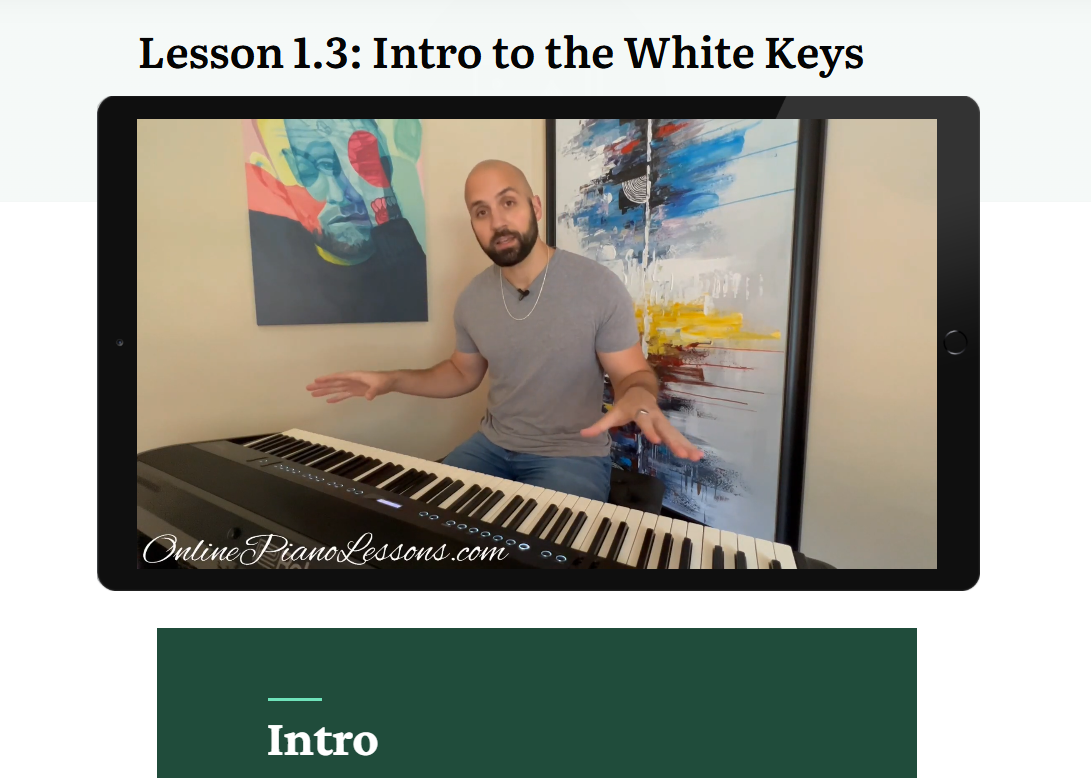The Aeolian mode — often called the Aeolian scale — is the backbone of what most listeners recognize as “natural minor.” On the piano, the Aeolian mode provides a familiar, emotive minor sound that’s used in everything from folk songs to pop ballads to cinematic scores. This in-depth guide will explain what the Aeolian scale is, how it’s constructed on the piano, what it sounds like, how to practice it, and how to use the Aeolian mode creatively in composition and improvisation.
What Is The Aeolian Mode?
The term Aeolian mode historically comes from medieval modal theory, but in modern terms the Aeolian mode is simply the natural minor scale. When pianists say “play in A Aeolian” they mean play A natural minor: A B C D E F G A. The Aeolian scale is characterized by a minor third above the tonic and a minor seventh — those intervals give the Aeolian mode its melancholic but stable character on the piano.
The Formula Of The Aeolian Scale
You can build any Aeolian scale using this whole-step/half-step pattern:
W — H — W — W — H — W — W
Applied to the piano starting on A you get the A Aeolian scale (A natural minor) as: A — B — C — D — E — F — G — A. That same formula works from any root; the Aeolian mode is transposable across all twelve keys on the piano.
How The Aeolian Scale Sounds On The Piano
On the piano the Aeolian scale sounds more somber and inward than a major scale, but not necessarily sorrowful — it can also be warm, reflective, or powerful depending on tempo and voicing. The Aeolian mode’s flattened third and seventh are the emotional drivers: the minor third gives the basic minor color, and the minor seventh keeps the sound modal rather than fully resolved like a harmonic minor would. When you play a melody in the Aeolian scale on piano, it often feels introspective and natural, which is why it’s such a popular choice in songwriting and film scoring.
Aeolian Mode Versus Natural Minor (and Other Minor Scales)
People often use the phrases Aeolian scale and natural minor interchangeably — for practical piano playing they’re the same. The distinction matters when you compare to other minor forms: melodic minor raises 6 and 7 ascending, harmonic minor raises 7 only, but the Aeolian mode keeps both the 6th and 7th degrees lowered (relative to major). That gives the Aeolian scale a consistent color both ascending and descending on the piano, which suits many lyrical and modal contexts.
Fingerings And Technical Tips For Pianists
Practicing the Aeolian scale on piano is straightforward but benefits from conscious fingering and musical shaping:
- For one-octave right-hand practice in A Aeolian (all white keys), try 1–2–3–1–2–3–4–1 ascending; mirror for descending.
- Practice the Aeolian scale in all keys to train your hands to the different black/white patterns and to internalize the modal sound across the keyboard.
- Use legato and dynamic shaping to make Aeolian melodies sing; the piano’s touch gives the Aeolian scale expressive nuance.
- Include arpeggios (i, iv, v) built from the Aeolian mode to link linear practice with harmonic understanding.
Harmonizing The Aeolian Scale On Piano
Harmonizing the Aeolian mode produces slightly different chord relationships than major key harmony. In A Aeolian the primary triads are:
- i: A minor (A–C–E)
- iv: D minor (D–F–A)
- v: E minor (E–G–B)
Because the Aeolian scale keeps the 7th degree lowered, the v chord remains minor rather than a dominant major V. That gives Aeolian harmonies a circular, modal feeling — on the piano it sounds less cadential and more meditative. You can also use modal interchange: borrow a major V (E major) occasionally to create strong cadences, but keeping things pure to the Aeolian mode preserves its modal identity.
Musical Uses And Genres
The Aeolian mode is everywhere on the piano. Songwriters use the Aeolian scale for emotional ballads and minor-key pop. Film composers use the Aeolian mode for reflective cues and character themes. Folk and traditional music frequently employ the Aeolian scale because its natural minor color is easy to sing and harmonize. Jazz and fusion musicians sometimes use Aeolian-derived lines for modal sections where a softer minor color is desired. The piano’s wide register and sustaining ability make the Aeolian mode especially effective for long, lyrical statements.
Practical Exercises To Internalize The Aeolian Scale
- Daily warm-up: play one-octave Aeolian scales in three keys each day (hands separate → together).
- Arpeggio loop: play i → iv → v (three-bar loop) and improvise short Aeolian melodies over the loop.
- Modal melody writing: write a simple 8-bar melody using only notes of the Aeolian scale and harmonize it on the piano.
- Transposition drill: take a short Aeolian phrase and transpose it to all twelve Aeolian keys to build facility.
- Ear training: sing the Aeolian scale degrees before playing them to connect aural recognition with fingerings.
These exercises reinforce both the physical piano technique and the modal ear needed to use the Aeolian scale musically.
Compositional Tricks Using The Aeolian Mode
- Emphasize the minor 6th in melodic phrases to highlight the Aeolian sound (e.g., F in A Aeolian).
- Use iv chords with added 9ths or suspensions to create lush Aeolian textures on the piano.
- Alternate Aeolian passages with parallel major sections for dramatic contrast — the return to Aeolian will feel more poignant.
- Employ pedal points (sustained bass notes on the tonic) while improvising Aeolian lines in the upper register to create a hymnal, modal atmosphere on the piano.
Common Mistakes And How To Avoid Them
- Accidentally raising the 7th: beware of defaulting to harmonic or melodic minor when you intend Aeolian; keep the 7th lowered for a pure Aeolian mode feel on the piano.
- Overcomplicating harmony: the Aeolian scale’s charm often lies in simplicity — don’t overcrowd it with unnecessary chromatic alterations.
- Lack of phrasing: even simple Aeolian lines benefit from clear, vocal-like phrasing on the piano.
Applying Aeolian Mode To Popular Songs
Many well-known songs are effectively in Aeolian mode or use Aeolian passages. When you analyze songs on the piano, listen for the Aeolian scale’s lowered 6th and 7th — that will reveal whether a passage is truly Aeolian. Reharmonizing a pop melody in Aeolian can be a fun exercise: try changing a major chorus to Aeolian for a darker twist on the piano.
Advanced Uses: Modal Interchange And Extensions
Advanced pianists use the Aeolian mode as a springboard. Combine Aeolian voicings with extensions (m7, m9, sus2) to add color without losing modal character. Experiment with modal interchange: briefly borrow chords from parallel modes (like dorian or harmonic minor) before returning to Aeolian to create tension and release. The piano’s range lets you split textures between hands — keep a slow Aeolian bass pattern while the right hand explores ornaments and passing tones.
Final Thoughts
The Aeolian mode and the Aeolian scale on the piano are foundational tools for any musician who wants expressive minor colors without the heavy cadential pull of dominant harmonies. Its simplicity is its power: once comfortable with the Aeolian scale across keys, you’ll be able to craft melodies and harmonies that feel timeless and deeply musical.
FAQ
Q: What is the Aeolian mode?
The Aeolian mode is the natural minor scale; on piano it’s the scale with intervals W–H–W–W–H–W–W and a characteristic minor third and minor seventh.
Q: How does Aeolian scale differ from harmonic and melodic minor?
The Aeolian scale keeps both the 6th and 7th degrees lowered (relative to major) and does not raise them ascending as melodic minor does or raise only the 7th like harmonic minor.
Q: Which piano chords fit best with the Aeolian mode?
Primary Aeolian chords are i, iv, and v (minor triads). Seventh chords like i7 and iv9 create rich Aeolian textures.
Q: Can I improvise with the Aeolian mode on piano?
Yes — set up a simple i–iv–v loop and try improvising short motifs using only Aeolian notes; focus on emphasizing the lowered 6th for modal flavor.
Q: Is Aeolian the same as minor key?
Aeolian is a form of minor (natural minor). In practical piano use, “minor key” can also imply harmonic or melodic minor alterations; Aeolian specifically means the natural minor collection.
Q: How often should I practice the Aeolian scale on piano?
Short daily sessions (10–15 minutes) focusing on scale runs, arpeggios, and improvisation will integrate the Aeolian mode effectively into your playing.





 Hi, I'm Thomas, Pianist Composer,
Hi, I'm Thomas, Pianist Composer,  I love playing piano, creating new melodies and songs, and further developing my online piano course and making updates/additions to my site OnlinePianoLessons.com!
I love playing piano, creating new melodies and songs, and further developing my online piano course and making updates/additions to my site OnlinePianoLessons.com!  Now that is what I call fun!
Now that is what I call fun!





